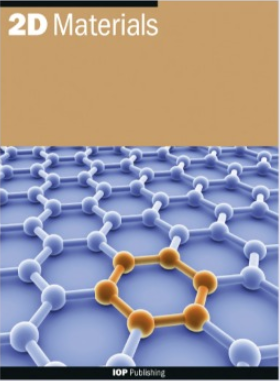通过类德耦合控制单层 WSe2 的谷极化
IF 4.3
3区 材料科学
Q2 MATERIALS SCIENCE, MULTIDISCIPLINARY
引用次数: 0
摘要
间隙散射机制强烈影响着过渡金属二卤化物单层中激子复合物的动力学。在这里,我们研究了 WSe2 单层中激子谷极化的激发能量依赖性。我们观察到,当激发与 B1s 共振共振时,谷极化急剧下降。这种现象可以用驻留在相反山谷但具有相同自旋构型的激子态之间动量空间的德克斯特耦合来解释。这导致激子群从光驱动谷向相反的非驱动谷净转移。我们观察到了这种种群转移的长期特征,即中性激子的谷极化消失,而双激子复合物的谷极化为负,这与基于完全微观多粒子方法的理论预测基本一致。这一点,再加上当激发与 B1s 状态共振时 PL 能量的降低,表明了 Dexter 类耦合在原子薄半导体激子动力学中的重要作用。本文章由计算机程序翻译,如有差异,请以英文原文为准。
Control of the valley polarization of monolayer WSe2 by dexter-like coupling
Intervalley scattering mechanisms strongly affect the dynamics of excitonic complexes in transition metal dichalcogenide monolayers. Here, we investigate the excitation energy dependence of the valley polarization of excitons in a WSe2 monolayer. We observe that the valley polarization drastically decreases when the excitation is resonant with the B1s resonance. This behaviour can be explained by a Dexter-like coupling in the momentum space between exciton states residing in opposite valleys but with the same spin configuration. This induces a net transfer of the exciton population from the optically driven valley towards the opposite, undriven valley. We observe the long-term fingerprints of this population transfer, as a vanishing valley polarization for the neutral exciton, and a negative valley polarization for biexcitonic complexes, in qualitative agreement with theoretical predictions based on a fully microscopic many-particle approach. This, together with a decrease of the PL energy when the excitation is resonant with the B1s state, points to the prominent role of the Dexter-like coupling in the exciton dynamics of atomically thin semiconductors.
求助全文
通过发布文献求助,成功后即可免费获取论文全文。
去求助
来源期刊

2D Materials
MATERIALS SCIENCE, MULTIDISCIPLINARY-
CiteScore
10.70
自引率
5.50%
发文量
138
审稿时长
1.5 months
期刊介绍:
2D Materials is a multidisciplinary, electronic-only journal devoted to publishing fundamental and applied research of the highest quality and impact covering all aspects of graphene and related two-dimensional materials.
 求助内容:
求助内容: 应助结果提醒方式:
应助结果提醒方式:


